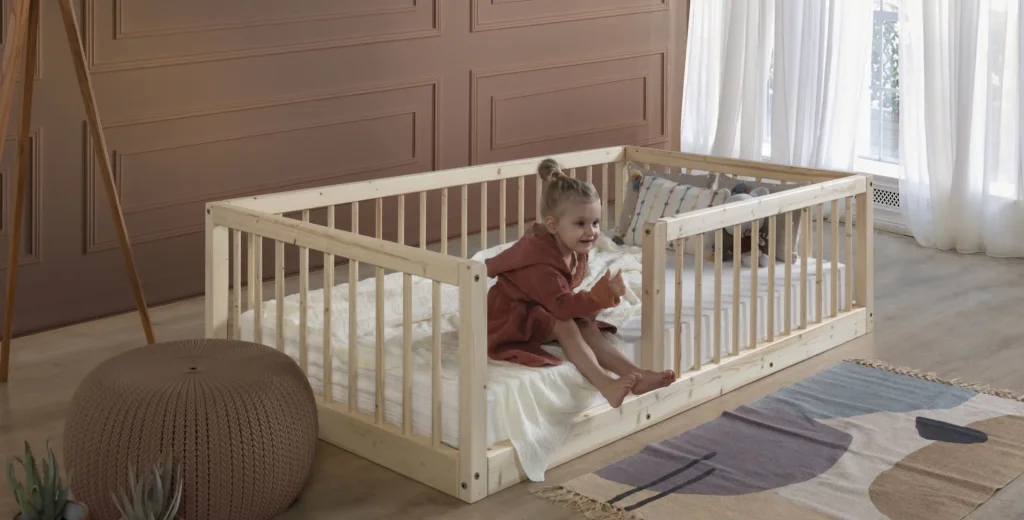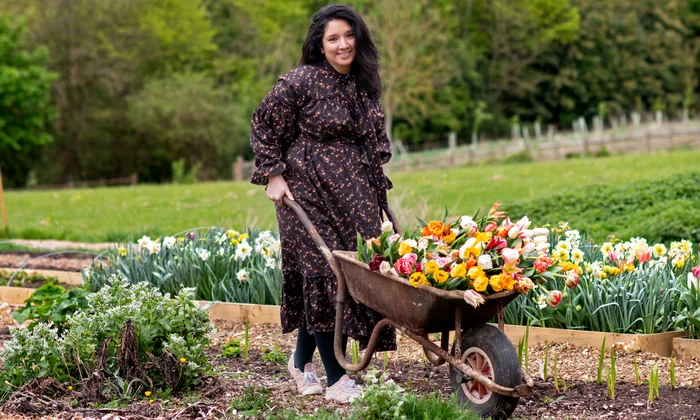How to Pick the Right Toddler Floor Bed Style
Parents often feel stuck when their toddler leaves the crib but isn’t ready for a full-sized bed. Safety, comfort, and freedom all matter, yet not every bed balances them well. A toddler floor bed does. It’s low, safe, and gives kids the independence to climb in and out on their own.
This guide explains the purpose of floor beds, when to switch, the benefits, and six practical styles. It also covers how to choose the right one for your space and child’s habits. With the right pick, bedtime becomes calmer for both parent and toddler.
What’s the Purpose of a Floor Bed?
A toddler floor bed lets kids move safely while building confidence. It allows toddlers to climb in and out freely without high rails, while staying close to the ground to reduce falls. This design keeps bedtime simple and less stressful for both children and parents.
These beds support early independence. Kids explore their space without feeling confined. The setup encourages safe sleep in a room designed for free movement. Parents get peace of mind knowing their child rests securely in a bed made for their size.
When Is the Right Time to Switch?
Most children move to a floor bed between 18 and 36 months. The right time is when your toddler starts climbing from the crib or shows interest in a bigger bed. Walking ability and stable sleep patterns also signal readiness.
Choosing a low bed makes the transition smoother. It prevents falls and keeps bedtime safe. Picking the right moment helps toddlers feel comfortable in their new sleep space. Parents also find the change less stressful when safety is built in.
Benefits of Choosing Floor Beds
Floor beds do more than save space. They build autonomy by letting kids enter and exit safely while lowering the risk of falling. Parents gain relief knowing the setup is secure and simple.
They’re easy to clean and move, which helps with room upkeep. Mornings and bedtimes often run smoother because toddlers can manage their own space. Families also find them cost-friendly compared to raised toddler beds, making them a smart, safe option.
6 Floor Bed Styles Parents Should Know


Minimal Frame Bed
A minimal frame bed has a low wooden border around the mattress. It adds structure without being heavy or bulky. This style is straightforward, safe, and easy to match with any room. Parents can also paint or refinish the frame for a personalised touch.
It’s best for families who prefer something simple yet sturdy. The low frame keeps toddlers safe while giving just enough structure to hold the mattress in place.
Bed with Adjustable Rails
This style offers flexibility. It has rails that can be added or removed depending on your child’s stage. In the early days, the rails prevent rolling out. Later, they can be taken off as the child becomes more steady.
Many include small side openings, so toddlers can still get in and out on their own. Adjustable rail beds work especially well in households with more than one toddler, since safety needs can vary.
Rounded Corner Bed
Rounded corner beds put safety first. Soft, curved edges reduce the chance of bumps and bruises. They’re usually made from smooth hardwood or other child-friendly finishes.
This style is great for parents worried about sharp corners in tight rooms. It gives a clean look, feels secure, and blends into both small and large spaces.
Multi-Use Floor Bed Frame
This type offers more than sleep. It can serve as a reading nook, a play area, or even a guest spot as the child grows. Some designs include shelves or a small headboard for storage.
Parents who like long-lasting furniture often pick this option. Over time, the bed can adapt for older children, pets, or even visiting relatives. It’s a flexible investment that serves multiple purposes.
Loft-Ready Low Frame Bed
This bed starts low but grows with your child. It can later be turned into a loft bed when the toddler is older and ready for height. Until then, it sits close to the ground for safety.
The design is sturdy and built for years of use. It works best in bigger rooms where there’s space to expand later. Parents who plan ahead often choose this style.
Soft-Fabric Frame Bed
Soft-fabric frames are padded and upholstered. They give a cosy, cushioned feel while staying lightweight and safe. Many designs include stitched headboards, making them both comfortable and practical.
Fabric frames often come in neutral tones. That makes them easy to fit into any room style. They also feel warmer in colder seasons, adding to a child’s comfort.
How to Pick the Right Floor Bed
Start with the size of your room. Small spaces need slim frames or fabric beds, while larger rooms can handle bigger designs like house or loft-ready beds. Match the style to your child’s sleep habits for better results.
If your toddler moves a lot, adjustable rails give extra security. If you want a long-term solution, modular or loft-ready beds last longer. Always check for non-toxic finishes, smooth edges, and sturdy frames. Safety comes first before design.
Final Thoughts
Picking the right toddler floor bed is more than just buying furniture. It’s about building independence, giving comfort, and keeping safety in mind. The right choice fits your room, your child’s habits, and your family’s needs.
From simple frames to flexible designs, floor beds make bedtime easier. A well-chosen style grows with your child and supports healthy routines. The goal is clear: a safe, cosy space where your toddler feels secure and free.













